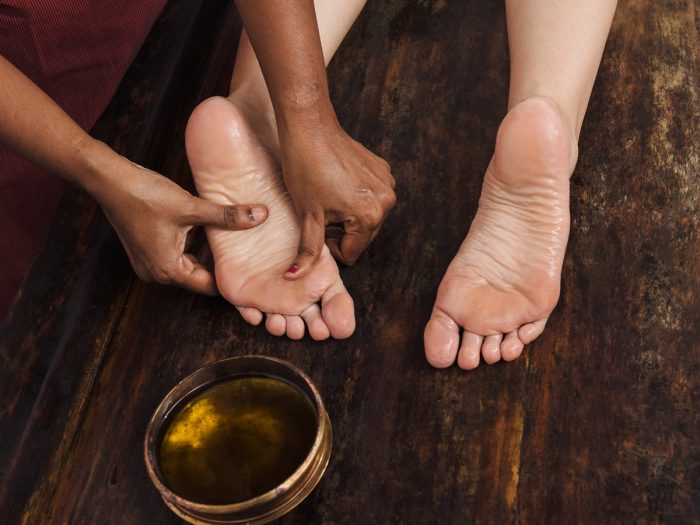The Chinese Tuina massage is a bodywork practice that has developed over centuries but is garnering its due attention lately. While at its core it is a combination of various massaging techniques, it might also be combined with other practices such as Ta’i Chi, moxibustion, fire cupping, and acupuncture, depending on the purpose.
What is Chinese Tuina Massage?
The term tuina, also tui na, refers to the ‘push and grasp’ method used primarily in this form of Chinese massage. The practice reportedly dates to the era of the Shang dynasty, originating in around 1700 BCE. [1]
While it is gaining popularity in the rest of the world only recently, the Chinese tuina massage is a significant practice in the traditional Chinese medicine system. As opposed to several massage practices, tuina is meant for healing and treatment, rather than relaxation and stress relief.

As with most traditional Chinese medicine systems, tuina also practices a holistic approach to health and ailments. It focuses on achieving a state of balance for qi (or ‘chi’) and directing it in a manner which helps your body rid itself of ailments and achieve a healthier state.
Here are a few fundamentals you should know about the Chinese tuina massage:
- Formally trained practitioners: Tuina massage is an age-old practice and the practitioners are trained to understand and direct your Qi.
- Fully clothed: If you are walking into a session, be aware that it is a fully clothed massage session and make yourself comfortable. Moreover, wear loose-fitting garments that allow your muscles to relax and move.
- Adapted to your needs: The session might start with a discussion to understand your health and requirements better. These massages are meant to address your ailments and are thus designed to suit your needs.
- Focus on Qi: Qi, life energy, is the focus of the Chinese tuina massage. Instead of aiming for simple relaxation, it aims for a holistic balance.
- Guided by Meridians: The Chinese massage, as with some other traditional Chinese medicine practices, is guided by meridians on the body. Meridians are the imaginary lines flowing through the body which connect the parts and act as energy channels.
Techniques of the Chinese Tuina Massage
Unlike several other massage practices which might follow a defined format to the best effects, the Chinese tuina massage practice is a mix of several techniques such as moxibustion, acupuncture, along with other basic ‘push-pull’ massage practices. The session will be best designed by the practitioner to suit your needs and your condition.
Children and Senior Patients
The tuina massage practice can be adapted for conditions ailing minors as well as older people. In such cases, the use of techniques like acupuncture is avoided. The practice adapted for children is known as pediatric tuina. It is used to address conditions such as anxiety, sleeplessness, bed-wetting, fever, and nausea.
Benefits of the Chinese Tuina Massage
As mentioned, the Chinese tuina massage is more focused on healing than relaxing. Here’s a look at the various benefits that the Chinese tuina massage might offer.
- Improved circulation
- Relief from muscle soreness
- Strengthens muscles [2]
- Improves sleep quality [3]
- Alleviates lower back pain [4]
- Helps with chronic neck pain [5]
- Improves cognition and memory
The Chinese tuina massage is an age-old practice which is now being recognized as a complementary and alternative medicine practice. With its focus on holistic healing, the massage addresses specific conditions that are ailing you. There is no reason to not give it a try. However, ensure that you are engaging a certified practitioner.
